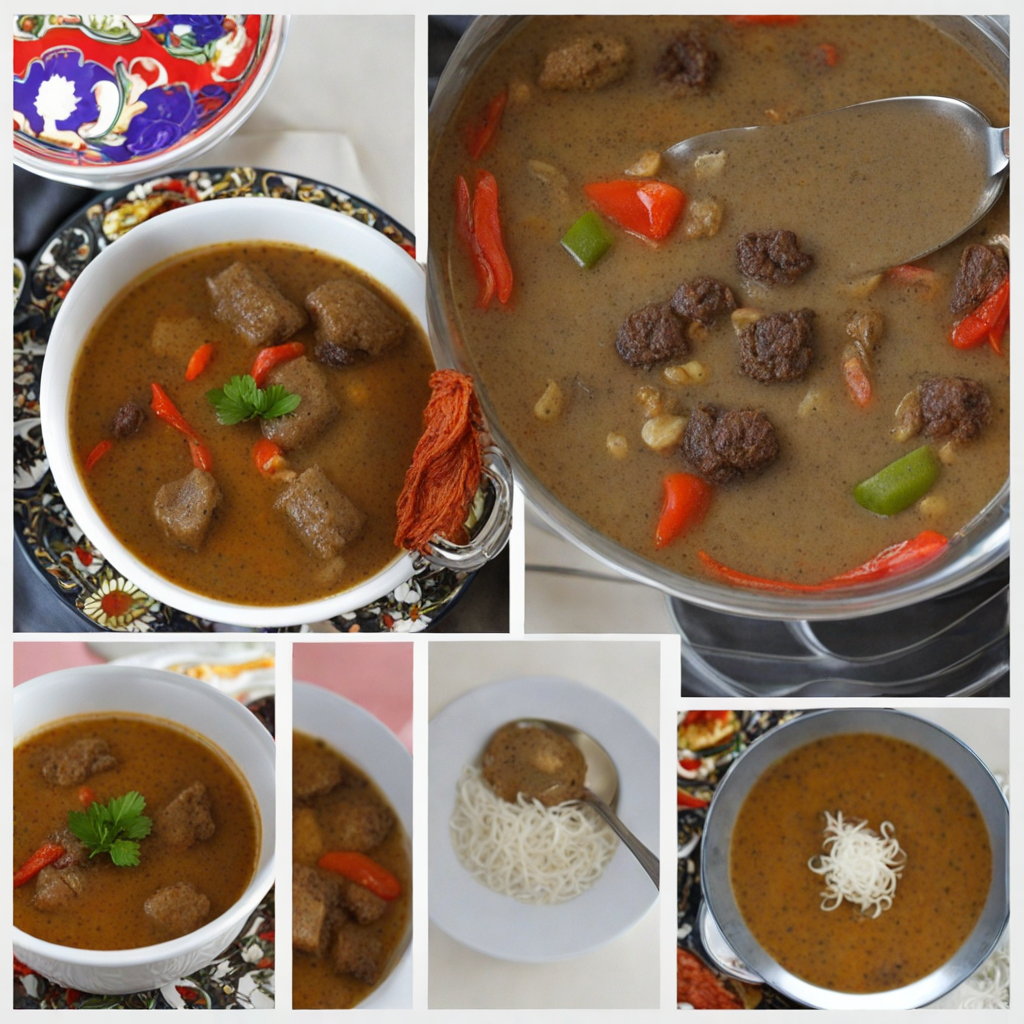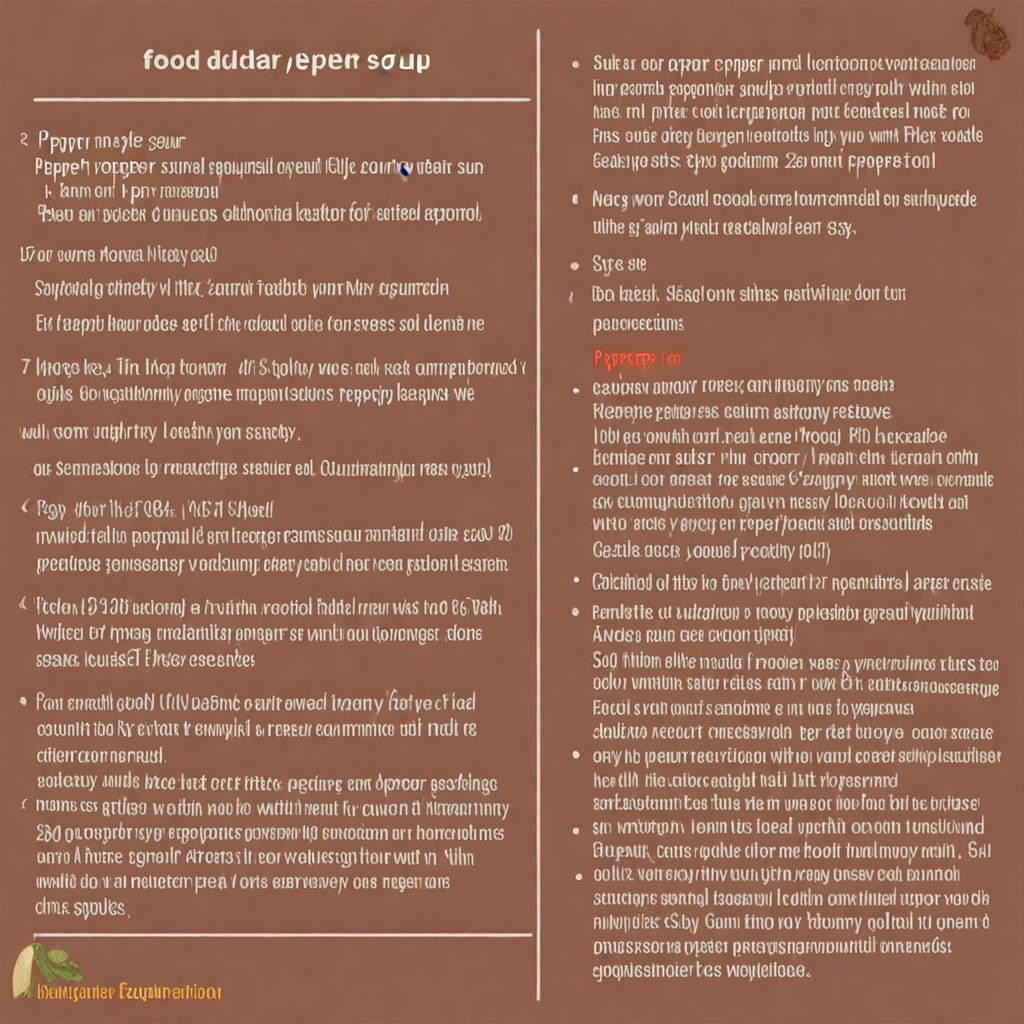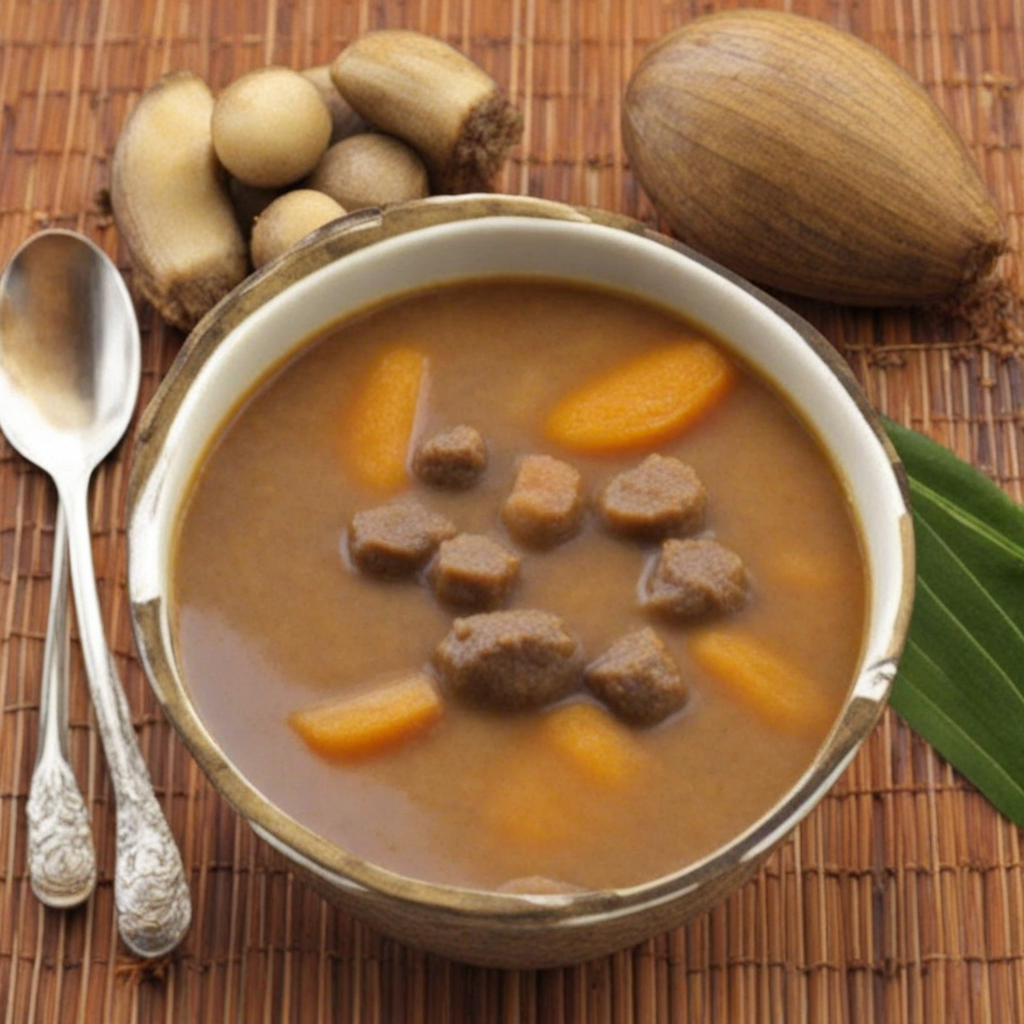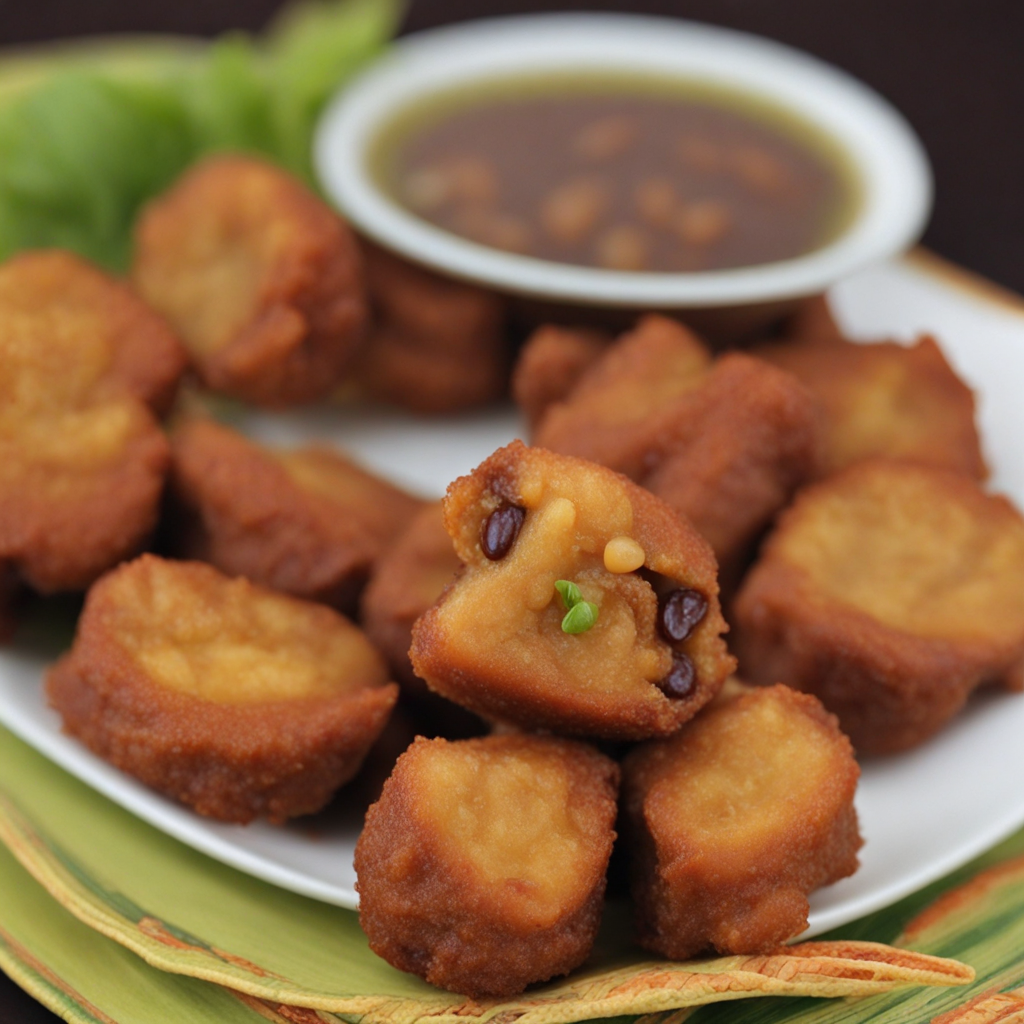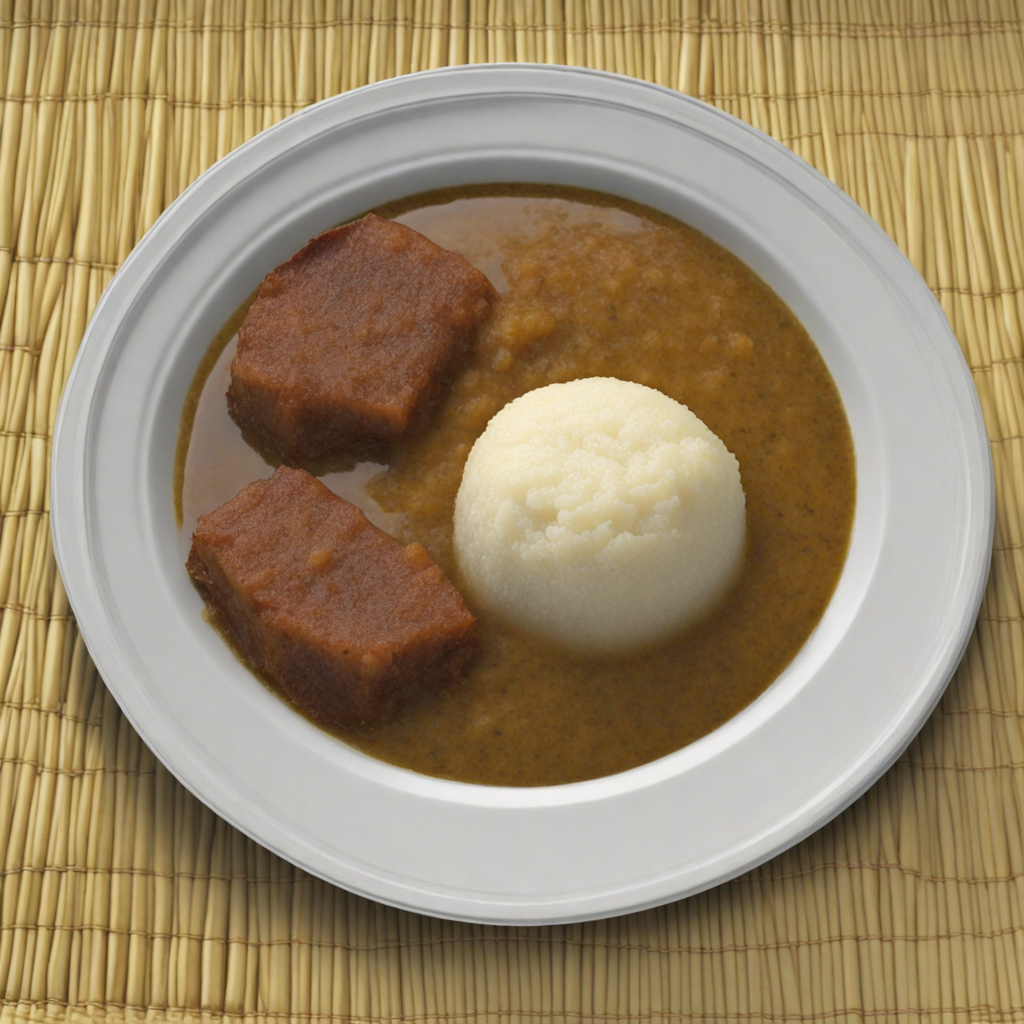Pepper Soup
Pepper Soup is a vibrant and aromatic dish that beautifully captures the essence of Equatorial Guinea's culinary heritage. This dish is a spicy broth that typically features a variety of meats, including chicken, fish, or goat, simmered to tender perfection. The key to its unique flavor lies in the use of local spices and ingredients, such as pepper, ginger, and garlic, which create a warm, comforting heat that invigorates the palate. Each bowl of Pepper Soup is often garnished with fresh herbs, adding a pop of color and a burst of freshness that complements the rich, savory broth. The preparation of Pepper Soup is as important as the ingredients themselves. Traditionally, the meat is marinated with spices before being boiled, allowing the flavors to meld beautifully. The use of indigenous spices, including the famous African pepper, lends an authentic character to the soup, making it a beloved dish among locals. As the soup simmers, the aromas waft through the air, enticing anyone nearby to take a taste. This dish is often served as an appetizer or a main course, frequently accompanied by side dishes such as plantains or rice, making it a versatile option for any meal. Enjoying Pepper Soup is not just about the taste; it's about the experience of sharing it with family and friends. In Equatorial Guinea, this dish is often prepared for gatherings and celebrations, symbolizing warmth and hospitality. As you savor the spicy warmth of the soup, you’ll find that each spoonful is a journey through the rich cultural tapestry of the region. Whether enjoyed on a chilly evening or at a festive gathering, Pepper Soup is sure to delight your senses and leave you craving more.
How It Became This Dish
Sopa de Pimienta: A Culinary Journey Through Equatorial Guinea #### Origins Sopa de Pimienta, or Pepper Soup, is a cherished dish in Equatorial Guinea, a small yet culturally rich country located on the west coast of Central Africa. This dish, as its name suggests, is centered around the use of pepper—specifically, a variety of hot and aromatic peppers that are locally grown. The origins of Sopa de Pimienta can be traced back to the indigenous Bantu populations who have inhabited the region for centuries. These communities developed their culinary practices based on the natural resources available to them, which included a vast array of spices, herbs, and local ingredients. The use of pepper in Equatorial Guinea's cuisine can be linked to the broader historical context of spice trade in Africa. The country, with its tropical climate and rich biodiversity, became a natural hub for the cultivation of various peppers. The introduction of new ingredients by European colonizers in the 19th century, notably the Spanish, also played a role in shaping the local palate. However, the essence of Sopa de Pimienta remains deeply rooted in indigenous practices, reflecting a blend of traditional knowledge and the adaptation of new influences. #### Cultural Significance Sopa de Pimienta holds a unique place within Equatorial Guinea's culinary landscape. It is not merely a dish but a symbol of warmth and hospitality. Traditionally served during gatherings, celebrations, and family meals, this soup is often prepared in large quantities, emphasizing communal values. The act of sharing food is highly regarded in Equatorial Guinean culture, where it fosters solidarity and strengthens social bonds. Moreover, Sopa de Pimienta is often associated with healing and comfort. The rich, spicy broth is believed to have restorative properties, making it a popular remedy for colds and flu. In a society where traditional medicine coexists with modern healthcare, the soup's reputation as a nourishing tonic is widely acknowledged. This aspect of the dish highlights the intersection of food and health in Equatorial Guinea, where culinary practices are intertwined with cultural beliefs and traditions. #### Ingredients and Preparation The fundamental ingredients of Sopa de Pimienta include a variety of peppers, meat (commonly chicken, goat, or fish), vegetables, and spices. The dish is characterized by its bold flavors, primarily derived from the pepper base, which can range from mildly spicy to fiery hot, depending on the cook's preference. The preparation involves simmering meat in water, adding chopped vegetables (such as onions and tomatoes) and a blend of spices, including the star ingredient—freshly ground pepper. The soup is often served with a side of rice or yuca, which balances the spiciness of the broth. In some variations, the inclusion of local ingredients, such as cassava leaves or plantains, adds depth and complexity to the dish. Each family may have its own recipe, passed down through generations, allowing for variations that reflect personal tastes and regional influences. #### Development Over Time As Equatorial Guinea has evolved, so too has Sopa de Pimienta. Post-independence in 1968, the country experienced significant political and social changes, which influenced its culinary landscape. The influx of people from various ethnic backgrounds within the country and the diaspora led to a fusion of culinary traditions. While Sopa de Pimienta remained a staple, new interpretations emerged, incorporating different proteins, vegetables, and cooking methods. The globalization of food culture has also played a role in the dish's development. With increased access to international markets, ingredients that were once scarce or locally sourced have become more widely available. This has allowed chefs and home cooks alike to experiment with Sopa de Pimienta, introducing fusion elements that honor traditional flavors while embracing contemporary culinary practices. In urban centers, Sopa de Pimienta has found its way onto restaurant menus, appealing to both locals and tourists. Chefs are now taking creative liberties, presenting the soup in innovative ways, sometimes even deconstructing it to highlight individual components. This evolution reflects a broader trend in Equatorial Guinea's culinary scene, where traditional dishes are celebrated and yet reimagined to fit modern dining experiences. #### Global Recognition In recent years, international interest in Equatorial Guinea's cuisine has grown, leading to a newfound appreciation for dishes like Sopa de Pimienta. Food festivals, cultural events, and culinary competitions have provided platforms for showcasing the rich gastronomic heritage of the country. Chefs from Equatorial Guinea have begun to represent their culinary traditions on global stages, sharing the flavors of Sopa de Pimienta with a wider audience. As culinary tourism gains popularity, travelers are increasingly seeking authentic experiences that include local cuisine. The rise of food bloggers and social media has further amplified the visibility of Equatorial Guinea’s culinary offerings. Sopa de Pimienta, with its aromatic appeal and comforting qualities, has become a dish that many are eager to try, transcending geographical boundaries and inviting exploration. #### Conclusion Sopa de Pimienta is more than just a dish; it is a culinary emblem of Equatorial Guinea, representing the rich tapestry of its cultural heritage, social values, and historical influences. From its indigenous roots to its modern interpretations, the soup has evolved while remaining a source of comfort and connection. As Equatorial Guinea continues to navigate its place in the world, Sopa de Pimienta stands as a testament to the power of food to bridge communities, celebrate traditions, and embrace change. This simple yet profound dish encapsulates the essence of a nation—its people, its history, and its enduring spirit.
You may like
Discover local flavors from Equatorial Guinea


